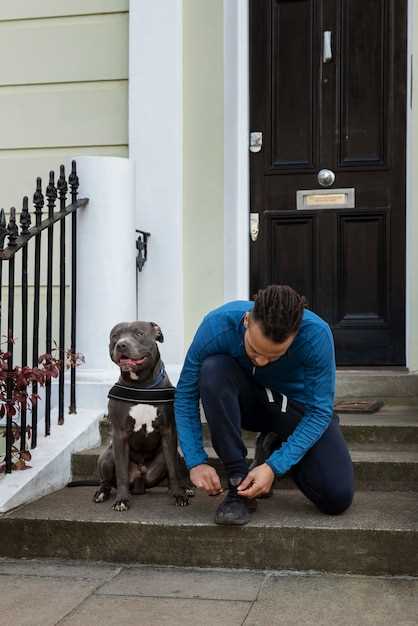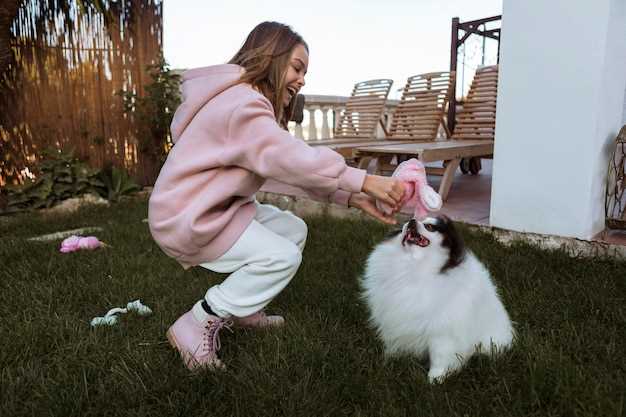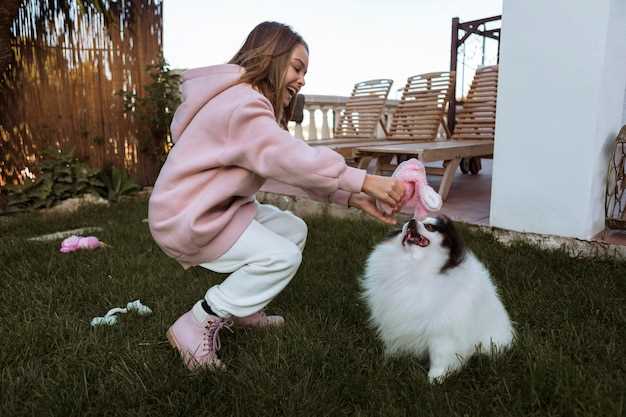Mastering Obedience and Behavior with Essential Training Tips for Maltese Dogs
Every pet owner knows the importance of nurturing a good relationship with their furry friend. Effective communication lays the foundation for a trusting bond. With the right approach, even the most spirited pup can become a delightful companion. This journey, however, requires patience, understanding, and a bit of knowledge.
It’s not just about commands; it’s also about the connection you build. Recognizing the unique personality traits of your canine can make all the difference. Consistency is crucial. Keep your strategies straightforward and engaging. Positive reinforcement will always yield better results.
Engaging in playful yet structured activities fosters a sense of discipline and respect.
In this article, we explore innovative methods to cultivate a harmonious atmosphere, ensuring your delightful companion thrives not only in following commands but also in enjoying life with you. By being attentive to their needs and leveraging enjoyable exercises, you can pave the way for a fulfilling partnership that enhances behaviors while fostering mutual respect and affection.
Essential Dog Training Tips for Maltese

Training a small breed can be a rewarding experience. These charming creatures often possess a lively spirit and keen intelligence. Understanding their unique personality traits is crucial. Creating a harmonious relationship involves patience and consistency. Leveraging positive reinforcement yields exceptional results.
Start with basic commands like sit, stay, and come. These form the foundation for advanced techniques. Remember, regular practice is key to success. Vary your training sessions to keep your pet engaged and excited. Reward them with treats or praise whenever they respond correctly.
Socialization is equally important. Introduce your furry friend to various environments, people, and other pets. This exposure helps diminish anxiety and prepares them for real-world situations. A well-adjusted pup is a joy to have around.
Additionally, short daily sessions work wonders. Long, monotonous practices can lead to boredom. Keeping things fresh and fun stimulates their minds. Use playful activities to reinforce learning without the stress. Always be aware of your pup’s mood; if they seem tired, take a break.
Finally, be patient and understanding. Each pet learns at their own pace. Celebrate small victories, and don’t forget that every interaction counts. Building a bond through enjoyable experiences leads to great outcomes down the line.
Understanding Maltese Behavior Traits

The behavior of a Maltese can be both fascinating and complex. These small companions often exhibit unique characteristics that reflect their breed’s history and temperament. Recognizing these traits can help owners form strong bonds. It’s essential to understand what makes them tick.
Here are some common behavior traits of the Maltese:
- Affectionate and loving.
- Highly intelligent and eager to learn.
- Vigilant and alert, often barking at intruders.
- Playful and energetic, thriving on interaction.
This breed enjoys companionship, making them feel best when surrounded by their human family. Their affectionate nature often leads to them following their owners closely. Maltese dogs are known for being curious, which can sometimes result in mischief if left unsupervised. When socialized properly, they become friendly with strangers and other pets.
Despite their small size, they possess a bold personality, often exhibiting confidence that may surprise owners. Their strong attachment to family can result in separation anxiety if left alone for too long. With consistent attention and gentle guidance, owners can help their Maltese thrive in various environments, shaping well-rounded and happy companions.
Understanding these behaviors is pivotal for any owner looking to nurture their pet’s emotional well-being. Adapting to their needs ensures a harmonious relationship, fostering trust and loyalty.
Characteristics of the Maltese Breed
The Maltese breed is known for its distinctive traits and charming demeanor. Small yet sturdy, these dogs often become beloved companions in various households. Their lively personality brightens up any room. With a silky coat and expressive eyes, they capture hearts effortlessly.
These canines are incredibly social and crave interaction. Maltese thrive in environments where they receive ample attention and affection. Their playful nature keeps things lively and engaging. This special breed is known for forming strong bonds with their owners, often following them everywhere.
The following table outlines some of the key characteristics of the Maltese breed:
| Characteristic | Description |
|---|---|
| Size | Typically weighs between 4 to 7 pounds. |
| Coat | Long, flowing, and pure white fur that requires regular grooming. |
| Temperament | Friendly, playful, and affectionate with a bold personality. |
| Intelligence | Highly intelligent and quick learners, often eager to please. |
| Exercise Needs | Requires moderate exercise, including walks and play sessions. |
| Life Expectancy | Generally lives between 12 to 15 years or more with proper care. |
The Maltese is often revered for their adaptability, making them ideal for various living situations, including apartment life. Their minimal exercise requirements also mean they can thrive in urban settings. Despite their small size, these dogs have a huge personality that often draws admiration from both families and individuals alike.
Common Behavioral Issues
Many small breeds exhibit unique behavior patterns that can sometimes be challenging. Understanding these issues is crucial for fostering a harmonious environment. Some common concerns can arise unexpectedly, often leading to frustration for owners. Identifying these behaviors early allows for effective intervention. Each pet has its personality, and understanding it can make a difference.
Excessive barking is one frequent challenge that pet owners face. It can stem from boredom, anxiety, or a need for attention. Another issue many encounter is separation anxiety, which can manifest in various ways–such as destructive behaviors or continuous whining when left alone. Housetraining difficulties, too, can be a source of concern, especially if the pet is scheduled irregularly or experiences changes in routine.
In addition to these, aggression or territorial behaviors might develop, particularly if the animal feels threatened. Discerning the underlying cause of such behaviors is vital; sometimes, it may simply arise from insufficient socialization or fear of unfamiliar situations. Recognizing triggers helps in addressing these issues effectively, paving the way for a more peaceful coexistence.
Another common problem is reluctance to engage in physical activities, often leading to weight gain or reduced vitality. Addressing this lethargy requires gradual introduction to playful exercises, which can also strengthen the bond between owner and pet. Understanding these behaviors allows for tailored approaches, ensuring a more fulfilling companionship.
Importance of Socialization
Engaging young canines with diverse experiences is crucial. This process goes beyond mere interaction. It shapes their attitude toward various environments. Early exposure creates a foundation for confidence and adaptability.
When they meet different people, animals, and settings, they learn to understand the world. A well-socialized pup is usually calmer and more relaxed in new situations. They tend to exhibit fewer behavioral issues compared to those lacking exposure.
Socialization not only strengthens bonds with their humans but also fosters better friendships with fellow pets. Building these connections is essential for developing positive reactions. It also minimizes fear and aggression, which can often arise from unfamiliarity.
In essence, ensuring a holistic approach to interactions through socialization will pave the way for a happier, healthier, and more well-adjusted pet, ready to face the myriad situations life has to offer.
Impact of Environment on Behavior
The surroundings play a significant role in how animals act and respond. Changes in environment can lead to noticeable shifts in temperament. Noise, space, and social interactions all contribute to behavioral patterns. A calm atmosphere often encourages relaxation, while chaos can provoke anxiety. It’s essential to recognize the influence of everyday settings.
For instance, a pet living in a busy household may adapt differently compared to one in a quieter environment. Excessive stimulation from children, other animals, or loud appliances can lead to overexcitement or stress. Conversely, a tranquil space promotes a sense of safety. Animals are incredibly perceptive; they can sense tension and relaxation. The atmosphere created by caregivers is crucial for mental well-being.
Moreover, frequent changes in scenery, such as moving homes or introducing new pets, can trigger adjustments in behavior. Animals are creatures of habit, and stability is vital to their emotional health. If they are suddenly relocated, they might exhibit signs of confusion or fear. Understanding how the environment shapes behavior is key to fostering a positive experience. A nurturing and consistent backdrop often leads to a happier and well-adjusted companion.
Effective Training Techniques for Maltese
When working with these little companions, a few dynamic strategies can make a significant difference. Consistency is key to success. Small rewards like treats or praise go a long way. Engaging them through playful methods ensures better retention of lessons. Above all, patience fosters a positive learning environment.
For these charming pups, it’s crucial to maintain clarity in communication. Using simple commands helps them grasp expectations more easily. Short, frequent sessions will keep their attention focused. Over time, this approach cultivates trust and confidence. Building their abilities through enjoyable interactions enhances both learning and bonding.
Addressing unwanted behaviors as soon as they arise is vital. Swift correction prevents bad habits from taking root. Utilizing redirection techniques is often more effective than punishment. Instead of scolding, gently guide them toward the desired behavior. This method encourages a more receptive attitude towards learning.
Incorporating socialization experiences is essential for overall development. Exposing them to various environments and individuals aids in reducing anxiety and promotes good manners. Playdates with other friendly dogs can foster invaluable social skills. The more these little ones interact, the more they adapt to different situations.
Ultimately, nurturing a bond through affection and trust lays the foundation for a fruitful journey together. As owners witness the progress made, their confidence will naturally grow. Consistent reinforcement of positive behavior solidifies lessons learned. Even the most challenging days can lead to rewarding moments. With each small success, the partnership deepens, bringing joy to both sides.
Positive Reinforcement Methods
One effective way to encourage desired behaviors is through positive reinforcement. This approach fosters a supportive environment where good actions are recognized. When rewards are given, they motivate and inspire. Animals thrive on praise and treats; it builds trust. Positive experiences create a bond between you and your companion.
Utilizing appropriate rewards is key. Always remember that each pet is unique. Some may respond fervently to verbal praise, while others might prefer tasty snacks. Timing is crucial; rewards should come immediately after the desired action to establish a clear connection. Consistency helps in reinforcing behaviors over time.
Incorporating a variety of rewards helps maintain interest and excitement. Using both physical and verbal praise can enhance the experience, leading to a stronger relationship. For instance, a gentle pat on the back along with enthusiastic words creates a joyful atmosphere. Mixing up treats will also keep your furry friend engaged, ensuring they look forward to learning experiences. Each interaction should feel rewarding and fun!
Adopting positive reinforcement not only encourages good habits but also makes the process enjoyable for both parties involved. As your companion learns successfully, their confidence grows, which is beneficial for overall development.
Basic Commands Every Maltese Should Learn
Teaching fundamental commands is crucial for fostering a strong bond between you and your pet. These skills not only enhance communication but also ensure safety in various situations. Understanding basic cues helps your companion navigate the world with confidence. Furthermore, it lays the groundwork for more advanced learning down the road.
Here are some key commands every Maltese should master:
“Sit” – This command is simple yet powerful. It can help control your furry friend’s impulses in public spaces. When your pup remains seated, they’re less likely to jump up on strangers or other pets.
“Stay” – This instruction teaches patience. It is particularly useful during walks or in crowded environments. When your Maltese understands to stay in one spot, you can prevent them from running into danger.
“Come” – A vital command for safety. Calling your companion back to you can avoid risky situations, especially in open areas like parks. A reliable “come” ensures they feel secure and allows you to manage their explorations.
“Leave it” – This phrase protects your pet from harmful substances or dangerous items they might find. It’s important for their well-being. Teaching this command takes time, but it’s worth the effort to keep them safe.
Incorporating these commands into your daily routine can significantly enhance your interactions, making outings together more enjoyable and stress-free. Regular practice, combined with positive reinforcement, will help your adaptable companion learn and thrive.
Consistency and Routine in Training
Establishing a structured approach is crucial for effective learning. Repetition helps reinforce behaviors and commands. When the environment remains stable, the learning process becomes smoother. Your companion will thrive in a predictable setting.
Daily interactions should be consistent. It’s important to engage in repetitive exercises. This builds familiarity and trust. Here are some key aspects regarding routines:
- Set specific times for activities to create familiarity.
- Use the same cues and signals consistently.
- Vary the surroundings only when your companion is comfortable.
- Stay patient and supportive throughout every session.
By developing a routine, you not only cultivate a sense of security but also facilitate quicker learning, leading to an overall enhanced relationship filled with mutual understanding and respect.
Challenges will arise, of course. However, maintaining a steady approach will significantly assist in overcoming obstacles. Remember, consistency is the foundation that fosters progress.
Video:
How To Train a Maltese Training
How To Train a Maltese Training by How To Train Your Puppy Free Guide 684 views 8 years ago 1 minute, 6 seconds
Q&A:
What are the fundamental obedience commands I should teach my Maltese?
When training your Maltese, it is essential to focus on basic commands such as “Sit,” “Stay,” “Come,” “Down,” and “Leave it.” These commands establish a foundation for good behavior and improve communication between you and your dog. Start with short training sessions of 5-10 minutes, using positive reinforcement techniques like treats and praise. Consistency is key, so practice these commands daily, gradually increasing the difficulty as your Maltese masters them.
How can I effectively manage my Maltese’s behavioral issues, such as barking or separation anxiety?
To manage behavioral issues like excessive barking or separation anxiety in your Maltese, first, identify the triggers. For barking, ensure they have enough physical and mental stimulation through regular exercise and engaging toys. For separation anxiety, gradually accustom your Maltese to being alone by leaving them for short periods and progressively increasing the time apart. Providing a safe, comfy space with their favorite toys can also help. Additionally, consider crate training, which can give them a sense of security when you’re away.
What positive reinforcement techniques work best for training a Maltese?
Positive reinforcement is one of the most effective training methods for Maltese dogs. This involves rewarding your dog with treats, praise, or playtime whenever they display the desired behavior. For example, if they sit on command, immediately give them a tasty treat and verbal praise like “Good job!” Consistent rewards help reinforce their learning. Additionally, using clicker training can be beneficial—it allows you to mark the exact moment your dog performs the desired behavior, making it clear what they are being rewarded for.
How do I socialize my Maltese puppy effectively?
Socializing your Maltese puppy is crucial for their development and can prevent behavioral issues in adulthood. Start socialization by exposing them to different environments, people, and other animals. Arrange playdates with other vaccinated puppies, visit dog parks, or enroll in puppy classes. Ensure that all experiences are positive by using treats and praise to create a pleasant association. It’s important to introduce new stimuli gradually and avoid overwhelming your puppy, as this can lead to fear or anxiety. Consistent socialization during the critical development period (up to 16 weeks of age) helps your Maltese become a well-adjusted adult dog.
